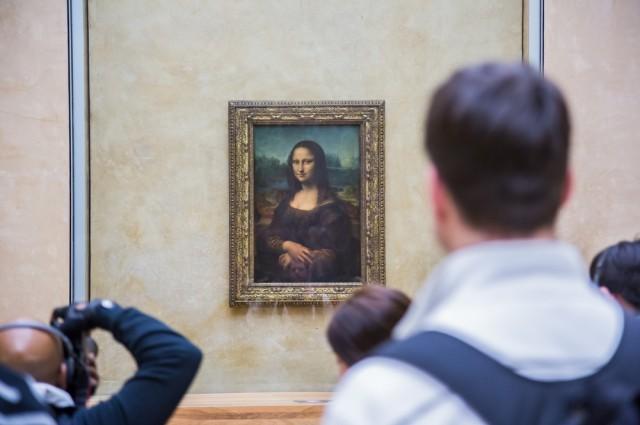Now, 500 years on from its completion, French scientist Pascal Cotte, has claimed to have uncovered hidden details within the painting. As reported by BBC News, this potentially means that the famous painted woman isn’t actually Mona Lisa at all. The findings will be presented in a documentary, "Secrets of the Mona Lisa", which airs on BBC Two tomorrow at 9pm GMT.

Cotte, the co-founder of Lumiere Technology, was given access to the painting (officially called La Joconde, the "happy woman") in 2004 by the Louvre. Using a pioneering technique called Layer Amplification Method (LAM), he claims to have found a second woman behind the portrait. “We can now analyze exactly what is happening inside the layers of the paint and we can peel like an onion all the layers of the painting,” he told BBC News.
The technique is non-invasive, meaning that it does not cause any damage to the painting by penetrating it or altering it in any way. The Mona Lisa was subjected to a series of intense lights, and a powerful camera picked up on the tiny changes in the variations in the way these beams of light reflected and scattered off the surface.
Each layer of paint added to the original canvas would produce relief – that is, a small “bump” rising from the surface. These bumps would be built upon time and time again, meaning that the final painting would have concealed many previous layers of paint beneath the surface. Cotte says that LAM can detect these intricate, fine layers beneath the surface by measuring the miniscule changes in how various frequencies of light bounce off these bumps.

These minute reflections were used to reconstruct the various hidden layers of the painting, and Cotte’s conclusions are already sending shockwaves through the art history world. Before it was painted over, another detailed portrait of a different woman can be seen, one without the trademark smile. This would mean, according to Cotte, that this reconstructed woman could be the original Lisa, and that the final painted woman we all see today is not Mona Lisa.
For the last six decades, the Mona Lisa has been subjected to multiple scientific examinations, including those using infrared light and other parts of the electromagnetic spectrum. Cotte claims that LAM can penetrate far deeper into the layers of the painting than previous investigations could.
Although the identity of the painted woman is somewhat open to interpretation, most art historians agree that Leonardo was indeed painting Lisa Gherardini, the wife of a silk merchant from Florence.

However, Martin Kemp, Emeritus Professor of the History of Art at the University of Oxford, is unconvinced that the “hidden” details reveal the true identity of the sitter in the painting.
“I do not think there are these discreet stages which represent different portraits. I see it as more or less a continuous process of evolution. I am absolutely convinced that the Mona Lisa is Lisa,” he told.
The Louvre has yet to officially comment on these new findings, but the new mystery is sure to only deepen intrigue in the famous portrait, today worth $782 million (£520 million).

